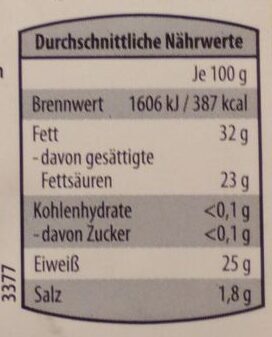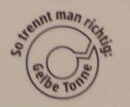Nordholland Premium Gouda mittelalt - Molenland - 285 g
Ambiguous barcode: This product has a Restricted Circulation Number barcode for products within a company. This means that different producers and stores can use the same barcode for different products.
×
This product page is not complete. You can help to complete it by editing it and adding more data from the photos we have, or by taking more photos using the app for Android or iPhone/iPad. Thank you!
×
Barcode: 29050178
Quantity: 285 g
Packaging: Plastic
Brands: Molenland
Categories: Dairies, Fermented foods, Fermented milk products, Cheeses, Cow cheeses, Uncooked pressed cheeses, Cheeses of the Netherlands, Gouda
Labels, certifications, awards:
No gluten, No GMOs, Ohne Gentechnik, PDO, Aus 100% Weidemilch

Traceability code: NL Z0114 EG
Stores: Aldi Nord
Countries where sold: Germany
Matching with your preferences
Report a problem
Data sources
Product added on by cjk
Last edit of product page on by ecoscore-impact-estimator.
Product page also edited by kiliweb, openfoodfacts-contributors, packbot, yuka.sY2b0xO6T85zoF3NwEKvllJNSPvRqS30M0HUtGeW4dmVA5P6b9V837L_Mas.












